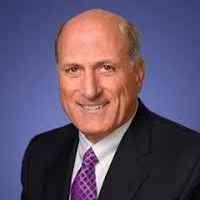
The Equipment Leasing Opportunity
Brought to you by Rinaldi Advisory Services

Community banks are ignoring the potential of a vast C&I market.
Equipment leasing and finance, or EL&F, is a significant source of new C&I assets and customer growth for community banks. In the U.S., equipment and related software purchases totaled $1.3 trillion in 2021. Of that, $780 billion, or roughly 60%, was financed. Suffice it to say, this market is consequential. And for banks, EL&F can generate both interest and noninterest income.
Entering the equipment finance market is not difficult but like any new business line for a community bank, it can seem complicated. Two objections we hear the most often are, “We do not understand it” or “We do not have someone on staff that has the expertise.” But banks can address and overcome these – and other – objections with a little diligence.
EL&F is starting to resonate with other opportunistic banks. In 2021, there were at least six notable acquisitions of independent equipment finance companies by community banks, along with several de novo startups. And now, more than 130 banks are members of the Equipment Leasing and Finance Association or ELFA – 38 community banks joined between 2017 and 2021.
EL&F Industry Overview
Roughly 80% of businesses in the U.S. choose to finance equipment. Meanwhile, net equipment lease and loan charge-offs have been historically lower than traditional C&I lending. In 2019, the weighted average net full-year loss for bank-owned lessors was 0.24%, according to ELFA’s highly regarded annual benchmarking Survey of Equipment Finance Activity, or SEFA.
The main reasons for the better risk metrics are that the equipment is essential to the borrowers’ business, and that the leases or loans amortize over the transaction terms. That means that loan-to-value ratios decline rapidly, even though many of them start out at 100%.
The yields and spreads in EL&F are also historically higher than other C&I assets. According to SEFA, the weighted average pretax yield for bank-owned lessors was 4.68% in 2019; the spread was 2.32%.
And SEFA reported that returns on average equity and average assets are also higher than traditional C&I. Bank-owned lessors enjoyed a weighted average ROAE of 10.9% and ROAA of 1.4% in 2019.
Common Business Models
The “small-ticket” or “vendor program” business model refers to transaction sizes that are under $250,000, and are widely considered to be small business lending. The focus in this space is on the source of equipment sales, whether that’s vendors, distributors or manufacturers. This business is very granular; delinquency and charge-off metrics are measured at the loan portfolio level instead of individual transactions. The market for this lending is national in nature, rather than local or within the bank footprint.
The “direct” model is predominantly middle ticket, with sizes of between $250,000 and $5 million per transaction. The focus of the lessors is primarily on the borrowers themselves, as opposed to the source of the equipment. The geography of this model can be within the footprint, regional or national in nature.
The “capital markets” model is simply a syndication channel for buying or selling from other leasing entities, both bank and nonbank.
Growing a Presence
There are several ways that banks typically enter and grow their EL&F businesses:
- Acquire an independent EL&F company.
- Lifting out an equipment finance team from other organizations.
- Starting up a business line or de novo startup.
- Participating in the EL&F capital markets as a buyer of leases, loans or portfolios.
- Combining the above models in a hybrid.
The method of entering and participating in the EL&F space depends on a bank’s asset size, culture, geographic footprint and expectations for the scale of the leasing assets within some time frame. These are necessary considerations for bank executives and boards to determine before exploring their options. Banks usually engage an experienced advisor or consultant to help the C-suite and board in this discovery process.
EL&F remains an exciting business for any bank that wants to grow its C&I assets and customer base. My business associates and I have seen many community institutions successfully enter this business. Unfortunately, we have also seen a few banks fail to fully realize the full potential of EL&F. The strategy to entering the equipment finance space requires a thorough understanding of the business and how it fits within your bank’s culture.


